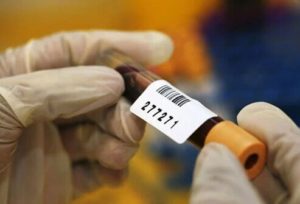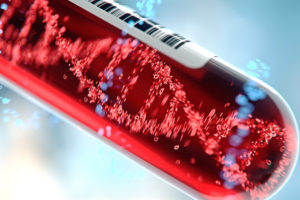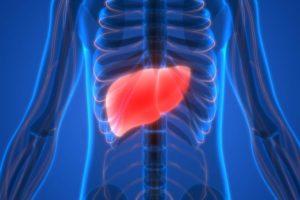Nonalcoholic Steatohepatitis-NASH Plasma
Bay Biosciences provides high-quality, tissue samples FFPE tissue blocks, with matched fresh frozen sera (serum), plasma, and peripheral blood mononuclear cells (PBMC) bio-fluids from patients diagnosed with Nonalcoholic Steatohepatitis (NASH).
The sera (serum), plasma and PBMC biofluid specimens are processed from nonalcoholic steatohepatitis (NASH) patient’s peripheral whole-blood using customized collection and processing protocols.
Fresh frozen tissue and matched biofluid samples are collected from unique patients diagnosed with nonalcoholic steatohepatitis (NASH).
Bio-samples are provided to a valued pharmaceutical customer for research, diagnostics, discovery and drug development.

Nonalcoholic Fatty Liver Disease (NAFLD)
Nonalcoholic fatty liver disease (NAFLD) also known as hepatic steatosis is a disease in which the accumulation of abnormal amounts of fat or excess fat is stored within the liver.
This buildup of fat is not caused by heavy alcohol use. When heavy alcohol use causes fat to build up in the liver, this condition is called alcohol associated liver disease.
Types of Nonalcoholic Fatty Liver Disease
Following are the two types of nonalcoholic fatty liver disease (NAFLD):
- Nonalcoholic Fatty Liver (NAFL)
- Nonalcoholic Steatohepatitis (NASH)
People usually develop one type of NAFLD or the other, although sometimes patients with one form of fatty liver disease are later diagnosed with the other form of NAFLD.
The reason some patients with NAFLD have simple fatty liver and others get NASH isn’t known, although research suggests that certain genes may play a role.
Nonalcoholic Fatty Liver Disease (NAFL)
NAFL is a form of NAFLD in which patients have fat in their liver but little or no inflammation or liver damage. NAFL typically does not progress to cause liver damage or complications.
However, NAFL can cause pain from enlargement of the liver.
NAFLD is one of the most common causes of liver disease in the United States. The majority of patients with NAFLD have NAFL. Only a small number of people with NAFLD have NASH.
Researchers estimate about 25 percent of adults in the U.S. have NAFLD and about 1.5% to 6.5% of U.S. adults have NASH.
NAFLD is more common in people who have certain diseases, including obesity and and conditions that may be related to obesity, such as type 2 diabetes.
Studies suggest that one-third to two-thirds of patients with type 2 diabetes have NAFLD. Research also suggests that NAFLD is present in up to 75% of patients who are overweight and in more than 90% of people who have severe obesity, also known as extreme obesity.
NAFLD and NASH in Children
NAFLD can affect people of any age, including children. Research suggests that almost 10% children (around 6 million children) in the United States ages 2 to 19 have NAFLD. However, kids are more likely to develop NAFLD as they get older.
NAFLD has become more common in children in recent decades, in part due to the growing epidemic of childhood obesity.
Children who have certain conditions, including obesity and conditions that are related to obesity, are more likely to develop NAFLD or NASH.
NAFLD is more common in boys than in girls. However, among children with NAFLD, girls and boys are equally likely to have NASH.
While NAFLD occurs in people of all races and ethnicities, it is most common among Hispanic individuals, followed by non-Hispanic whites and Asian Americans, including those of East Asian and South Asian descent.
Although NAFLD and NASH occur in children of all races and ethnicities, these diseases are most common in Hispanic children and Asian American children, followed by Caucasian children. NAFLD and NASH are less common in African American children.
Experts think that genes may help explain some of the racial and ethnic differences in NAFLD.

Nonalcoholic Steatohepatitis (NASH) Overview
Nonalcoholic steatohepatitis (NASH) is liver inflammation and damage caused by a buildup of fat in the liver. NASH causes the liver to swell and become damaged.
It is part of a group of conditions called nonalcoholic fatty liver disease. You may be told you have a “fatty liver.” Many people have a buildup of fat in the liver, and for most people it causes no symptoms and no problems.
But in some people, the fat causes inflammation and damages cells in the liver. Because of the damage, the liver doesn’t work as well as it normally should.
NASH can get worse and cause scarring of the liver, which leads to cirrhosis. But the disease doesn’t always get worse. NASH is similar to the kind of liver disease that is caused by long-term, heavy drinking. But NASH occurs in patients who don’t abuse alcohol.
Patients with NASH develop progressive fibrosis in 25%-50% of individuals over 4-6 years, while 15-25% of individuals with NASH can progress to cirrhosis.
In another study, 13 % of NASH patients with mild to moderate fibrosis (stage 1-2) and 50% of patients with fibrosis stage 3 developed cirrhosis.
According to NASH affects an estimated 3% to 6% of the US population and the prevalence is increasing.
According to the American Medical Association an estimated 20% of patients with NASH will develop cirrhosis, and NASH is predicted to become the leading indication for liver transplants in the US.
Signs and Symptoms of Nonalcoholic Steatohepatitis (NASH)
Nonalcoholic fatty liver disease (NAFLD) and nonalcoholic steatohepatitis (NASH) are typically silent diseases with few or no symptoms. Most patients who have nonalcoholic steatohepatitis (NASH) feel fine and don’t know that they have the disease.
Following are the signs and symptoms when nonalcoholic steatohepatitis (NASH) progresses and liver damage gets worse:
- Pain in the upper right side of the abdomen
- Fatigue (feeling tired all the time)
- Unexplained Weight Loss
- General weakness
- Enlarged liver or spleen (usually observed by a doctor during an exam)
- Ascites, or swelling in the belly
- Jaundice or yellowing of the skin and eyes
Causes of Nonalcoholic Steatohepatitis (NASH)
Exact causes of why some people with a buildup of fat in the liver get nonalcoholic steatohepatitis (NASH) and some don’t are unknown. It could be that something in the environment triggers the inflammation in these patients. It could also be a inherited disorder which runs in their families.
Following factors put people at risk for nonalcoholic steatohepatitis (NASH) and for liver damage:
- Obesity
- Insulin resistance and type 2 diabetes or pre-diabetes
- High cholesterol and high triglycerides
- Metabolic syndrome
Any three of the following conditions must be present in order to be diagnosed with metabolic syndrome.:
- Large waist size
- Hypertension (high blood pressure)
- Elevated blood sugar (glucose)
- High levels of triglycerides in your blood
- Low levels of “good” (HDL) cholesterol in your blood
Most patients who have nonalcoholic steatohepatitis (NASH) are 40 to 50 years old and have one or more of the problems listed above. But NASH disease can develop in patients who have none of these risk factors.
Nonalcoholic steatohepatitis (NASH) is more likely to develop in individuals who meet the following factors:
- Older Age (although children can also get it)
- Have type 2 diabetes
- Are Hispanic or Asian
- Exposure to certain toxins and chemicals
- Hypertension (having high blood pressure)
- Malnourishment
- Post-menopausal women
- Rapid weight loss
- Obese with body fat concentrated around the waist
- Have obstructive sleep apnea
- Thyroid gland (underactive)
- Pituitary gland (underactive)
Diagnosis of Nonalcoholic Steatohepatitis (NASH)
There is no single test that can diagnose nonalcoholic steatohepatitis (NASH). Following are some of the diagnostics tests used to see if fat is building up in the liver and to rule out other diseases:
- Blood tests (CBC)
- Abdominal ultrasound
- CT scan
- MRI scan
In addition to the above tests, a a liver biopsy may also be performed to be sure that you have NASH. In a liver biopsy, your doctor takes a sample of tissue from your liver and checks it for signs of NASH.
NASH is diagnosed by the histological examination of a liver biopsy showing steatosis with concomitant inflammation and hepatocyte injury (hepatocyte ballooning).
Some of the things your doctor may use to diagnose fatty liver disease are:
- Health History: Your doctor will ask about your alcohol use. This information can help your doctor determine if you have ALD or NAFLD. They’ll also need information about the medications you take, what you eat, and other health conditions you might have.
- Physical Exam: Your doctor weighs you and checks your body for signs of liver problems such as an enlarged liver or jaundice.
- Blood Tests: These can show if you have high levels of liver enzymes such as alanine aminotransferase (ALT) and aspartate aminotransferase (AST). If so, there could be a problem with your liver.
- Imaging Tests: You may get an ultrasound, computerized tomography (CT) scans, or magnetic resonance imaging (MRI). These tests can help show if there’s any fat in the liver. But they can’t differentiate if you have simple fatty liver or NASH.
- Liver Biopsy: Not everyone with NAFLD needs to have a liver biopsy. Your doctor may recommend it if you’re at risk for NASH or if other tests show that you may have NASH complications such as cirrhosis. A doctor removes a sample of tissue from your liver and sends it to a lab to see if you have liver inflammation or damage.This procedure is done at a hospital or outpatient surgery center. Before the procedure, you’ll get medicine to help you relax or control pain. For the biopsy, your doctor numbs the area and uses a special needle to take a small piece of tissue from your liver. A liver biopsy is the only way for doctors to diagnose NASH.
Treatment of Nonalcoholic Steatohepatitis (NASH)
Treatment for nonalcoholic steatohepatitis (NASH) includes managing conditions that increase your risk for NASH or make it worse. You can:
- Reduce your total cholesterol level
- Reach a healthy weight. Losing 3% to 10% of your total body weight can make a difference
- Control diabetes
- Quit Smoking
- Stop or cut back on drinking alcohol
- Exercise regularly
Lifestyle modification is the mainstay of treatment for NASH, including dietary changes and exercise, with the primary goal being weight loss.
Substantial improvement in histologic outcomes, including fibrosis, is directly correlated with increasing weight loss.
Diet and Nutrition for NAFLD & NASH
Individuals may be able to prevent developing NAFLD & NASH by eating a healthy diet, limiting your food portion sizes and maintaining maintaining a healthy weight.
Doctors will recommend NAFLD patients to gradually loose weight if they are overweight and obese.
Your doctor may suggest the following changes to your diet:
- Avoiding foods and drinks which are high in sugars specially fructose. This commonly is found in sweetened soft drinks, sports drinks, sweetened tea, and juices.
- Eating low glycemic index foods such as fruits, vegetables, and whole grains. These foods affect the blood glucose less than high-glycemic index foods, such as white bread, white rice, and potatoes.
- Patients who have NAFLD replacing saturated fats and trans fats in your diet with unsaturated fats, especially omega-3 fatty acids, will reduce your chance of having a heart disease.
- Limiting the intake to fats and other high calorie foods which increase your chance of developing obesity.

Bay Biosciences is a global leader in providing researchers with high quality, clinical grade, fully characterized human tissue samples, bio-specimens and human bio-fluid collections.
Samples available are cancer (tumor) tissue, cancer serum, cancer plasma cancer PBMC and human tissue samples from most other therapeutic areas and diseases.
Bay Biosciences maintains and manages its own bio-repository, human tissue bank (biobank) consisting of thousands of diseased samples (specimens) and from normal healthy donors available in all formats and types.
Our biobank procures and stores fully consented, deidentified and institutional review boards (IRB) approved human tissue samples and matched controls.
All our human tissue collections, human specimens and human bio-fluids are provided with detailed samples associated patient’s clinical data.
This critical patient’s clinical data includes information relating to their past and current disease, treatment history, lifestyle choices, biomarkers and genetic information.
Patient’s data is extremely valuable for researchers and is used to help identify new effective treatments (drug discovery & development) in oncology, other therapeutic areas and diseases.
Bay Biosciences banks wide variety of human tissue samples and biological samples including cryogenically preserved at – 80°C.
Including fresh frozen tissue samples, tumor tissue samples, FFPE’s, tissue slides, with matching human bio-fluids, whole blood and blood derived products such as serum, plasma and PBMC’s.
Bay Biosciences is a global leader in collecting and providing human tissue samples according to the researchers specified requirements and customized, tailor-made collection protocols.
Please contact us anytime to discuss your special research projects and customized human tissue sample requirements.
Bay Biosciences provides human tissue samples (human specimens) from diseased and normal healthy donors which includes:
- Peripheral whole-blood,
- Amniotic fluid
- Bronchoalveolar lavage fluid (BAL)
- Sputum
- Pleural effusion
- Cerebrospinal fluid (CSF)
- Serum (sera)
- Plasma
- Peripheral blood mononuclear cells (PBMC’s)
- Saliva
- Buffy coat
- Urine
- Stool samples
- Aqueous humor
- Vitreous humor
- Kidney stones (renal calculi)
- Other bodily fluids from most diseases including cancer.
We can also procure most human bio-specimens and can-do special collections and requests of human samples that are difficult to find. All our human tissue samples are procured through IRB approved clinical protocols and procedures.
In addition to the standard processing protocols Bay Biosciences can also provide human plasma, serum, PBMC bio-fluid samples using custom processing protocols, you can buy donor specific sample collections in higher volumes and specified sample aliquots from us.
Bay Biosciences also provides human samples from normal healthy donors, volunteers, for controls and clinical research, contact us Now.
日本のお客様は、ベイバイオサイエンスジャパンBay Biosciences Japanまたはhttp://baybiosciences-jp.com/contact/までご連絡ください。



